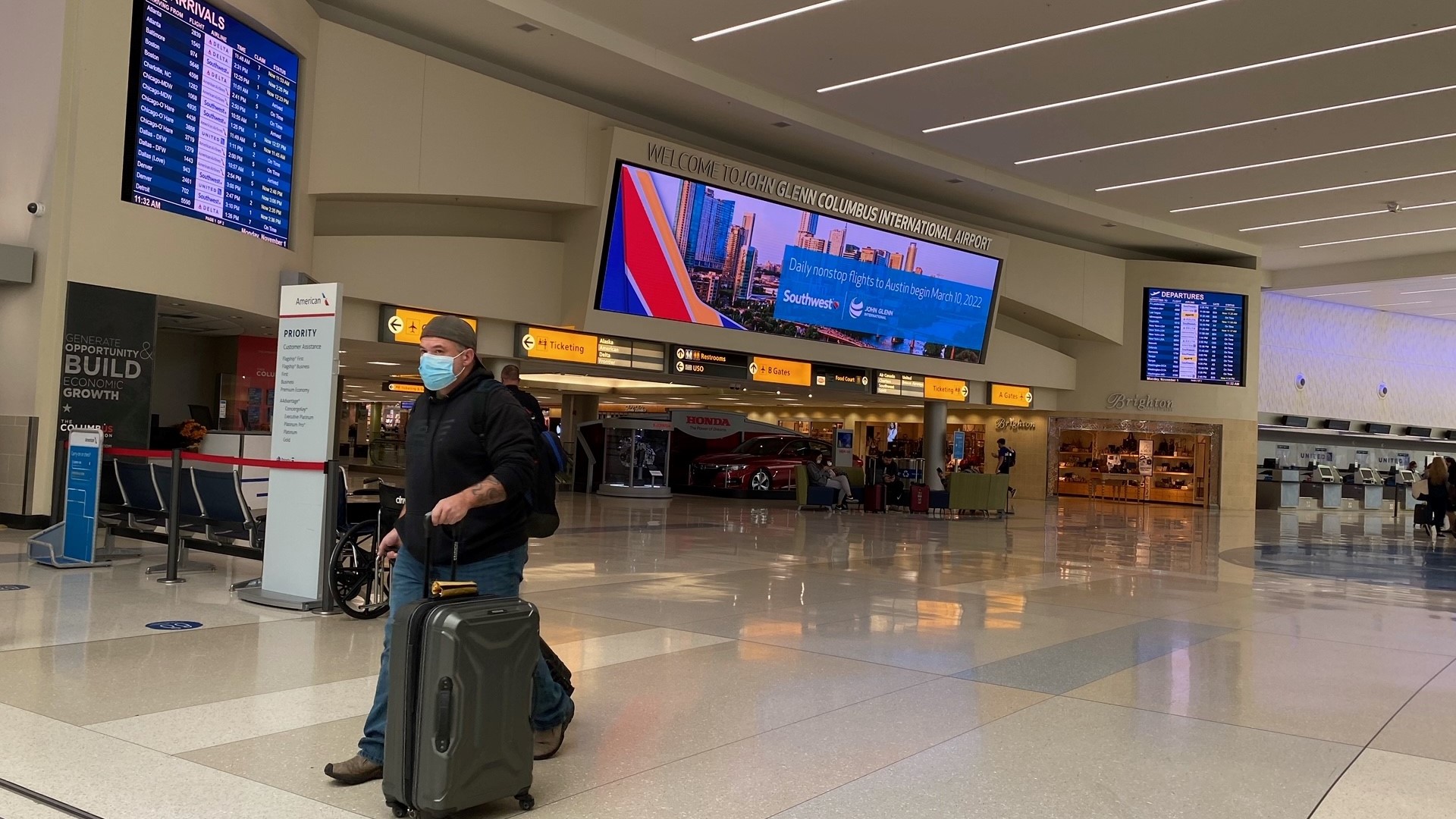COLUMBUS, Ohio — As millions of people get ready to fly this Thanksgiving, travelers may wonder why they are required to remove their shoes, belts and computers from their carry-on baggage. The answer is to help Transportation Security Administration screeners catch bombs or the components to make them.
Since the Sept. 11, 2001 terrorist attacks, the TSA has implemented a multi-layered approach to prevent explosives and other dangerous items from making their way onto commercial aircraft.
At the forefront of these efforts are advanced screening technologies deployed at airport checkpoints across the United States. In 2010, the TSA began installing hundreds of advanced imaging technology (AIT) units, also known as "full-body scanners," designed to detect non-metallic weapons and explosives that may be concealed under clothing. These scanners use sophisticated algorithms to create 3D images that can be rotated and analyzed by TSA officers.
TSA invited 10TV to go behind the scenes to see how it tests its screeners to spot fake bombs.
One-hundred and thirty-four flights leave John Glenn Columbus International Airport every day, according to airport statistics.
Dustin Epperson is a bomb explosive expert whose job it is to place unannounced fake bombs through the TSA checkpoint to see if screeners can spot the explosive.
"Complacency kills," he said.
TSA has been rolling out state-of-the-art computed tomography (CT) scanners at select airports. These scanners provide much more detailed imaging of the content inside carry-on bags. CMH has three CT scanners for each lane.
Introduced in 2018, these scanners produce detailed 3D images of carry-on bag contents, enhancing the detection of potential explosives and other threats. The technology allows TSA officers to rotate and zoom in on images, improving their ability to identify suspicious items without physically opening bags.
Behind the scenes, all checked baggage undergoes screening for explosives. In December 2002, the TSA met a key mandate of the Aviation and Transportation Security Act by deploying explosives detection systems nationwide to screen all checked bags.
Epperson showed us how bombs can be made to look like any household item. C-4 explosives can be molded to look like the frame of a computer screen or a chocolate bunny. Other explosives can fit inside the heel of a shoe, inside a computer, or stuffed animal.
10TV reporter Kevin Landers: Is the idea to place a dummy bomb in the TSA line to try and educate them are you trying to trick them? Or are you trying to make sure they are paying attention? What is the goal?
Epperson: "All of that? Yes. to all of that."
Bomb experts say the training is paying off.
Landers: You've been at CMH for how long?
Epperson: "16 years."
Landers: Have you ever found an explosive since you've been here?
Epperson: "We've found many different items, we've found live items that look like explosives."
The TSA also employs specially trained canine teams to detect explosives in airports. These highly effective teams can quickly scan large areas and crowds for potential threats.
While these measures have significantly enhanced aviation security, the TSA faces ongoing challenges in staying ahead of evolving threats.
In 2015, a Department of Homeland Security investigation revealed alarming vulnerabilities, with undercover agents successfully smuggling simulated weapons and explosives through TSA checkpoints in 67 out of 70 attempts. This 95% failure rate prompted the agency to reevaluate and strengthen its procedures.
Critics argue that despite billions spent on aviation security since 9/11, there's little concrete evidence that TSA screening has prevented any specific terrorist attacks.
However, security experts contend that the deterrent effect of these measures is difficult to quantify but likely significant.
As threats continue to evolve, TSA says its layered security strategy, combining advanced technology, trained personnel and intelligence sharing, aims to create multiple barriers against potential attacks. While no system is foolproof, these efforts have undoubtedly made it more challenging for would-be bombers to target commercial aviation.
You can learn more about prohibited items here.

